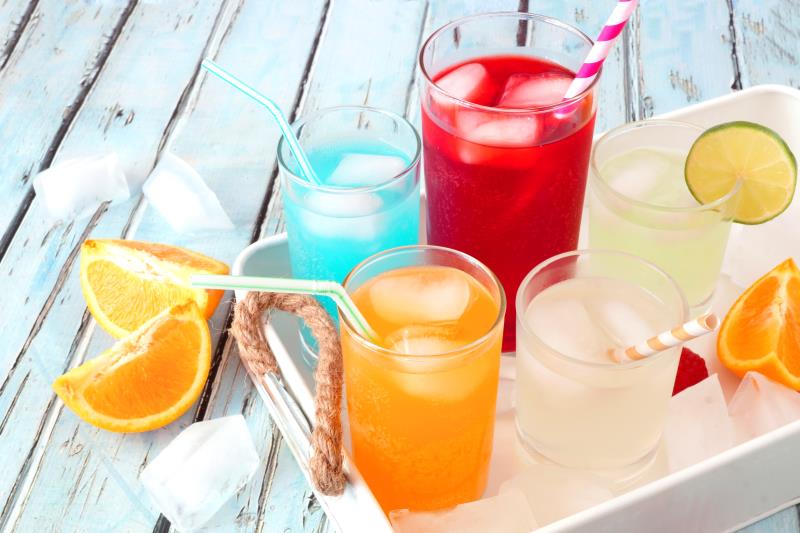 Increased sugary drink consumption tied to elevated T2D risk
Increased sugary drink consumption tied to elevated T2D riskAn increased consumption of sugary beverages may be associated with an elevated risk of developing type 2 diabetes (T2D). Conversely, replacing sugary drinks with noncaloric drinks may reduce this risk, a large, US-based prospective study found.
Compared with individuals with a stable consumption of sugary beverages (±0.14 serving/day or ±1.0 serving/week), an increase in total sugary beverage consumption (including sugar-sweetened beverages and 100 percent fruit juice) by >0.50 serving/day (>4 ounces) over a 4-year period was associated with a 16 percent elevated risk of developing T2D over the next 4 years (hazard ratio [HR], 1.16, 95 percent confidence interval [CI], 1.01–1.34; p<0.0001). [Diabetes Care 2019;doi:10.2337/dc19-0734]
This increased risk was significant regardless of whether the increased intake pertained to sugar-sweetened beverages (HR, 1.09, 95 percent CI, 1.03–1.17; p=0.006) or 100 percent fruit juice (HR, 1.15, 95 percent CI, 1.07–1.23; p=0.004).
Similarly, a >0.50 serving/day increase in consumption of artificially-sweetened beverages over a 4-year period was associated with an 18 percent elevated risk of T2D in the following 4 years compared with a stable intake (HR, 1.18, 95 percent CI, 1.02–1.36; p=0.001).
Regardless of beverage type (sugar- or artificially-sweetened), an increase in consumption from <1 serving/week to ≥1 serving/day over 4 years was tied to a 15 percent increased risk of T2D in the subsequent 4 years compared with a stable consumption of <1 serving/week. Compared with <1 serving/week for 4 years, the T2D risk was 9 percent among those who decreased their consumption from ≥1 serving/day to <1 serving/week, while the T2D risk was 23 percent higher in those who consumed ≥1 serving/day for 4 years.
Any increase in consumption of artificially-sweetened beverages was associated with an elevated risk of T2D compared with <1 serving/week for 4 years. However, the researchers advised caution when interpreting these findings due to the potential for reverse causation, where individuals with a higher risk of T2D switched from sugar- to artificially-sweetened beverages for weight control, and surveillance bias, where individuals underwent more frequent diabetes screening.
“Our study suggests that increasing consumption of sugary beverages, whether they contain added or naturally occurring sugar, is associated with a higher risk of diabetes,” said the researchers.
Decreasing intake of sugar-sweetened or artificially-sweetened beverages did not appear to affect diabetes risk compared with stable intake. In contrast, replacing 1 serving/day of sugary beverages with water, coffee, tea, or reduced-fat milk was tied to a 2–10 percent reduced risk of T2D.
The results were based on analysis of participants in three cohorts namely the Nurses’ Health Study (n=76,531 women), the Nurses’ Health Study II (n=81,597 women), and the Health Professionals’ Follow-up Study (n=34,224 men) who had completed food frequency questionnaires every 4 years. A total of 11,906 confirmed cases of T2D occurred over 2,783,210 person-years of follow-up.
“The study results are in line with current recommendations to replace sugary beverages with noncaloric beverages free of artificial sweeteners. Although fruit juices contain some nutrients, their consumption should be moderated,” said study senior author Professor Frank Hu from the Harvard T. H. Chan School of Public Health in Boston, Massachusetts, US.
One mechanism postulated for the increased T2D risk was the stimulation of appetite by sugar-sweetened beverages leading to elevated calorie intake and impaired insulin sensitivity, said the researchers. With regard to artificially-sweetened beverages, previous research has suggested that artificial sweeteners may alter gut microbiota leading to glucose intolerance and may also affect insulin secretion. [Physiol Behav 2015;152:450-455]
While reflective of a real-world setting, the primarily Caucasian population may limit the generalizability of the findings, the researchers noted. Furthermore, the reasons for changing intake of sugary beverages was not accounted for.